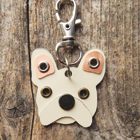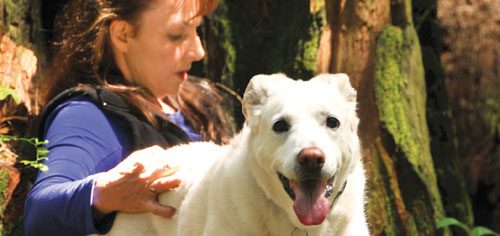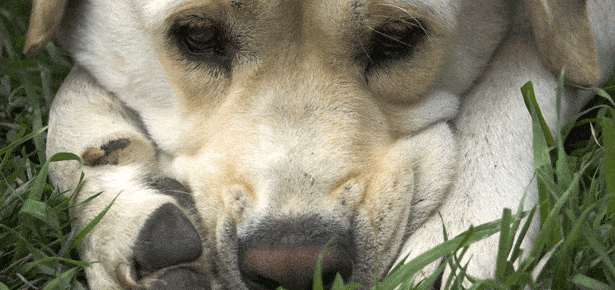
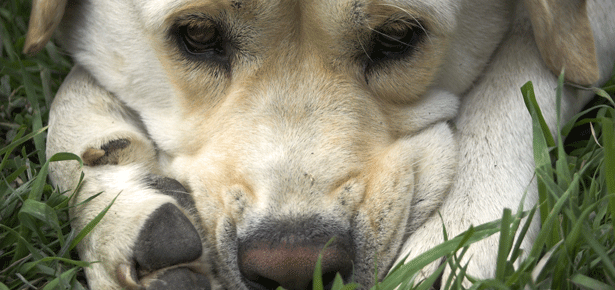
How Dogs Grieve
How Dogs Grieve
Ethel the Chihuahua was dying.
She’d suffered from an autoimmune disorder, which had been controlled by medication, for years. But the medication had stopped working, and the vet told Ethel’s owner, Alison Lee Carruthers, that there was nothing left to do.
“My heart was broken,” Alison remembers. In 2013, the New York City fashion merchandiser made the decision to euthanize her beloved pet and long-time companion.
What she didn’t anticipate was the grief of her other dog, Sam. While the two dogs had shied away from other canines, the pair had been inseparable for years. After Ethel passed, Sam stopped eating, began to lose weight, and generally moped around all day. He clung to Alison and her then-partner. “Not only was I upset about Ethel, I was worried about Sam as well,” Alison says. “He seemed depressed. I’d underestimated the depth of their connection.”
Photographer Mathew McCarthy of Guelph, Ontario, has a similar story. His dog, Gertie, a Goldendoodle, was 10 years old when she died from cancer.
“We brought her to the vet for that inevitable appointment,” he says. “Afterwards, Dexter, my other dog, walked from room to room for awhile looking for her. He also went to the same tree in the park where we would sit with Gertie when she was in too much pain to walk. Still makes me choke up thinking about it,” he says.
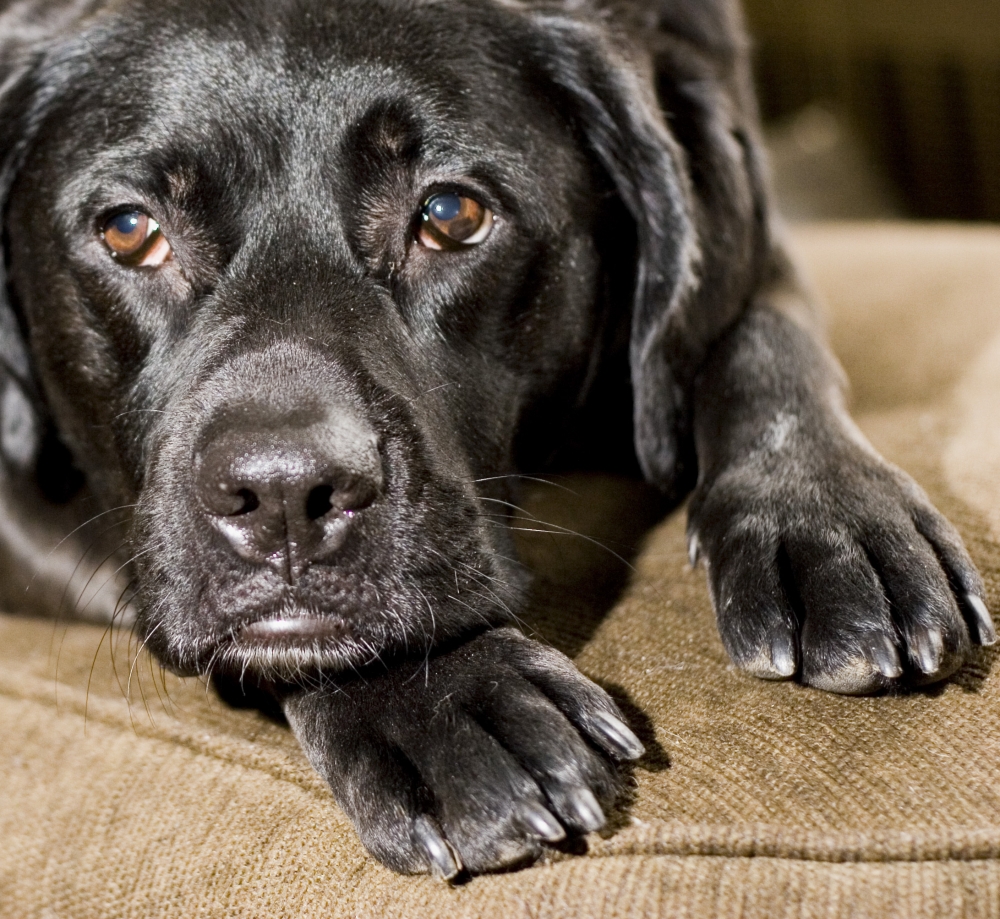
“I think it helped,” Mathew says. “He seemed not right for a couple weeks and continued to pull toward that spot in the park for months.”
The subject of animals and grief has been of great interest to Dr. Barbara J. King, Professor Emerita in the Department of Anthropology at the College of William and Mary in Williamsburg, Virginia, and the author of How Animals Grieve.
“I find it incredibly moving to realize that—as has become a theme in my writing and public speaking—grief and love aren’t only human emotions,” says Dr. King. “We share them with many other creatures on our Earth. That brings me a sense of connection and also of solace when I myself am faced with grief.”
The interest in animals and grief goes back to Darwin in the 19th century, but Dr. King says that in the last five years, there has been a revival of attention to this topic by scientists, many of whom study the links between anthropomorphism and conservation behaviour.
“From wild animals to farmed and companion animals, the studies on animal grief are increasing by the month,” she says. Last summer, the world watched with sadness as the Orca called Tahlequah carried her dead calf with her in the Pacific Northwest for 17 days in what the media referred to as a “tour of grief.”
Although animals do not verbalize their grief in words the way humans do, there is still evidence across the animal kingdom—from dogs and cats to chimpanzees to dolphins—that shows they may grieve the loss of a mate or family member quite intensely through persistent patterns of social withdrawal, changed eating or sleeping patterns, and signals in their body language, Dr King says. In How Animals Grieve, she cites statistics from the ASPCA’s Companion Animal Mourning Project that indicate that two-thirds of dogs exhibit negative behavioural changes after losing another dog from their household and that these changes may linger for up to six months.
To get an idea as to what may be going on in a dog’s head when a loved one dies, we can look at what goes on in the mind of a child in the two to five-year age range, says Dr. Stanley Coren, Professor Emeritus in the Department of Psychology at the University of British Columbia.
“These children do not understand that death is irreversible,” says Dr. Coren. “It is common for a young child to be told something like ‘Aunt Ida has died and won’t be coming back,’ only to have the child ask a few hours later, ‘When will we get to see Aunt Ida again?’ Children do not comprehend that the life functions of their loved one have been terminated and this is reflected in their questions as they try to understand the situation. They ask things like: ‘Do you think we should put a sandwich or an apple in Grandma’s coffin in case she gets hungry?’ In the absence of an understanding of death there can be pain and sorrow and depression, but the behavioural scientists suggest that this is different from the more adult feelings of grief.”
Dr. Coren saw firsthand the heartache and sorrow that the loss of a loved one could bring to a dog when his cherished Flat-coated Retriever, Odin, died.
With Odin gone, Dancer, a Nova Scotia Duck Tolling Retriever, systematically looked at each of the four locations where his companion would go to lie down. After doing this several times he wandered to centre of the room, looking around forlornly, and whimpering.
“It was several weeks before he stopped checking all of the places that Odin should have been whenever he came home from a walk,” says Dr. Coren. “Much like one might expect from a child who did not have the concept of the permanence of death, Dancer never gave up on the idea that Odin might reappear. Up through the last year of his long life, Dancer would still rush toward any long-haired black dog that he saw, with his tail batting and hopeful barks as if he expected that perhaps his friend had returned.”
“Not only was I upset about Ethel, I was worried about Sam as well,” Alison says. “He seemed depressed. I’d underestimated the depth of their connection.”
Well known are the stories of loyal grieving dogs Greyfriars Bobby and Hachiko. Greyfriars Bobby was a Skye Terrier who spent 14 years guarding the grave of his owner in Edinburgh, Scotland, during the 19th century. Hachiko, an Akita in Japan, spent nine years waiting for his owner following his death. Everyday Hachiko would return to the train station where he used to welcome his owner home from work, waiting hours for his return. Both dogs have been upheld for their loyalty and have inspired books, movies, and statues.
More contemporary cases of dog loyalty and grieving can be found on the Internet. A rescued Rottweiler named Brutus lays next to his dying brother, Hank, and refuses to leave. In Cedar Rapids, Iowa, a miniature Schnauzer, Fitzi, wanders 20 blocks from home to a hospital where her owner was being treated for cancer. A dog is filmed chasing down the ambulance that speeds away with his sick owner in Goiana, Brazil, and in Abbotsford, British Columbia, a 13-year-old Border Collie-Dalmatian-German Shepherd cross named Sadie resumes eating only after attending her deceased master’s memorial service.
One case Dr. Coren finds particularly touching is that of Jon Tumilson and his black Labrador Retriever, Hawkeye. When the Navy SEAL was killed in Afghanistan in 2011, his dog lay in front of his flag-draped casket at the funeral in Iowa, where he remained for the entire service, a moment immortalized in a now-famous photograph.
“Yes, there is sorrow, but perhaps something more positive than grief,” says Dr. Coren. “Because dogs do not have the knowledge that death is forever, at least there is the option to hope—a hope that their loved one might come back again.”
Dr. King says that although “animal people” intuitively understand, through living with dogs, cats, and other pets, a great deal about animal emotions, the idea that animals feel emotions is still met with scientific skepticism.
“Even today, I discover that some scientists claim it’s often a case of anthropomorphism—an inappropriate ascribing of our human feelings to our pets or other animals,” she says. “Yet there’s scientific evidence to show that often this isn’t anthropomorphism at all. When we observe carefully, the animals themselves tell us through their own visible behaviours if they feel enormous sadness when a family member or close friend dies, or when they become separated from them for one reason or another.”
That dogs grieve doesn’t surprise Frances Tregurtha at all. The Hamilton, Ontario registered massage therapist and osteopathic thesis writer grew up with dogs and cats. She believes they can be “more tuned in than a lot of people I know. They don’t question their motivation or appropriateness of the things they need to do to process, they just do it,” she says.
When Frances’ cat Tyson was killed by a car, her Rottweiler cross, Pepper, began to sleep under the chair in the living room where Tyson liked to sleep — a space far too small for the large dog. “She did this for at least a few weeks,” Frances recalls.
Dr. Coren points to a study, headed by Jessica Walker from the New Zealand Companion Animal Counsel, on how surviving pets responded to the disappearance of their companion. The study showed that one of the most common behaviours observed in dogs was to continually check the places where their lost housemate normally napped or rested. Grieving dogs also become clingy and needy, sleep more and show decreased appetite. This study is of great interest to Dr. Coren, who says “that these are all behaviours which one might observe in a human child who was experiencing grief and stress because of the loss of a human family member,” he says.
For Dr. King, the grasp of animal emotions has broader social implications. It “becomes a call for all of us to think about both our own interactions with animals and the patterns in society around treatment of animals,” she says.
“We can use what we know of animal grief to help animals who are in emotional difficulty,” she says. “[We] can give dogs extra love and attention and veterinary care if they need it, and make sure they aren’t spending most of the day alone. We can refuse to separate dolphins from their families to put them in theme parks for our entertainment. We can see what is wrong with a dairy-food system that again and again keeps apart mother cows from their offspring.”
For mourning dogs, times heals, as it does for humans.
Whether they have lost another dog or a human friend, many grieving dogs just need time, plus extra doses of attention and exercise and love, says Dr. King. Others may respond to a younger animal, which can offset an animal’s grief by providing a lighter mood. “Occasionally, veterinary treatment is needed for intractable grief,” Dr. King says. “Much depends on the grieving animal’s personality and circumstances.”
In Dexter’s case, time has lessened his sadness over his canine friend Gertie’s death.
“He’s OK now,” Mathew says of his dog. “I think he just got used to the idea that she was gone.”
The signs that a dog is grieving may vary from individual to individual, and can be assessed by the person who knows the grieving dog best. Common signs include loss of appetite, lethargy, and anxiety behaviours including pacing and clinginess.
 Dogs & Grief
Dogs & GriefIn other cases, the symptoms may be even more startling, says Dr. King — “relentlessly searching the house or yard for the dog or person who has died, an inability to rest or alternatively sleeping way too much, a real refusal to eat properly that risks the dog’s good health, spiraling anxiety that shows up as excessive barking or ‘bad behaviour’ that really is just acting out deep feelings,” she says. “The signs will vary with a dog’s personality, too; keep in mind that not all dogs will grieve and some may even be thrilled if another dog in the home dies, because they will now get more attention than ever.”
Owners should watch out for symptoms of grief and treat them accordingly. Offering a grieving dog an exercise regime, enrichment such as toys and treats, and renewed training to provide extra routine and structure may all help. “Know when it’s enough to help the dog yourself and when it’s time to seek veterinary advice or intervention,” she says. “Close attention (and) intuition are the best tools of all.”
Some animal behaviourists believe that the grief response in dogs can be reduced if the animal gets a chance to view their deceased companion’s body.
“The idea seems to be that this will provide closure,” Dr. Coren says. “It is suggested that the dog will now understand that their companion is no longer alive and is not coming back; in other words, this is a final separation not based upon their housemate simply going away…This seems to confirm to me that dogs act very much like young human children in that they do not have a concept of death as a final and irrevocable separation.”
Join the newsletter and never miss out on dog content again!
"*" indicates required fields
By clicking the arrow, you agree to our web Terms of Use and Privacy & Cookie Policy. Easy unsubscribe links are provided in every email.


